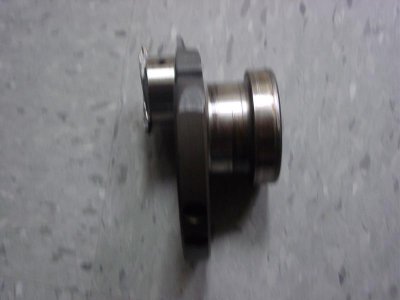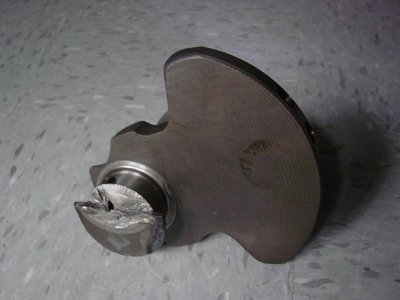-Hand-built balanced motor straight from Japan
-Stock bottom end
-Low boost
-Crank broke in half!
When I purchased my '92 NSX, I had the motor replaced with a special motor that was used from Japan.
This motor was a rare and special hand-built, balanced by Honda straight from the factory. The motor ran good and strong until about a few weeks ago, with about 60,000 miles on it total after I put about 8,000 miles on it. The engine immediately changed pitch and started to have a light resonant vibration to it, it sounded really bad so I pulled over and shut off the motor.
Upon inspection the alternator belt jumped 1 tooth which didn't make much sense because I just replaced that belt. When I turned the car back on, I could see the crank moving back and fourth 1cm when engaging and disengaging the clutch. I thought it was the thrust bearing so I decided to pull the motor apart.
Check out the engravings Honda made on the rod signifying the weight of the rod for balancing purposes, they had different numbers on the rods:


And the factory-drilled counter-weights to balance the rotating assembly:

Searching for the problem:
When I opened up the motor, the crank appeared to be fine:

The main and rod bearings look great as well:

This confused me and I wasn't sure what was wrong. As I started to pull the crank out, I noticed a crack that didn't look good:

As I tried to lift the crank out it moved further and I knew it really wasn't good, but the main bearing looks great:

Wow, the crank cracked in half! I don't know how it held together!



Other side:


My broken crank:

So what do you guys think?
-Stock bottom end
-Low boost
-Crank broke in half!
When I purchased my '92 NSX, I had the motor replaced with a special motor that was used from Japan.
This motor was a rare and special hand-built, balanced by Honda straight from the factory. The motor ran good and strong until about a few weeks ago, with about 60,000 miles on it total after I put about 8,000 miles on it. The engine immediately changed pitch and started to have a light resonant vibration to it, it sounded really bad so I pulled over and shut off the motor.
Upon inspection the alternator belt jumped 1 tooth which didn't make much sense because I just replaced that belt. When I turned the car back on, I could see the crank moving back and fourth 1cm when engaging and disengaging the clutch. I thought it was the thrust bearing so I decided to pull the motor apart.
Check out the engravings Honda made on the rod signifying the weight of the rod for balancing purposes, they had different numbers on the rods:


And the factory-drilled counter-weights to balance the rotating assembly:

Searching for the problem:
When I opened up the motor, the crank appeared to be fine:

The main and rod bearings look great as well:

This confused me and I wasn't sure what was wrong. As I started to pull the crank out, I noticed a crack that didn't look good:

As I tried to lift the crank out it moved further and I knew it really wasn't good, but the main bearing looks great:

Wow, the crank cracked in half! I don't know how it held together!



Other side:


My broken crank:

So what do you guys think?










